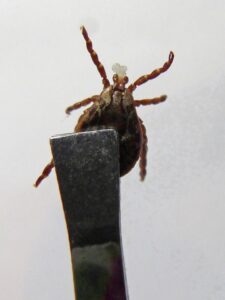Pet owners want to protect their pets and do their best to keep them from escaping or wandering off. Many put a collar or a tag with identifying information on their pet, but wonder if there is more they can do. Dogs and cats can escape from even the most careful owners and may not know how to get back home. In some cases, animal control or neighbors may pick the animal up and take it to a shelter.
Pets can’t tell a person their name or where they live. If their collar or tag comes loose or they weren’t wearing one, a pet microchip can be a big help in helping the pet find its way home again.
Easy To Install
Pet microchips are very small. They are not battery-powered. Owners should not attempt to install the microchip themselves. About the size of a grain of rice, the veterinarian can safely inject the microchip into the pet, where it will bond to the tissue and won’t migrate.
When the vet injects the microchip, they often do not use an anesthetic. Sometimes, they will inject the microchip at the same time they are doing another procedure, like a spay or neuter.
It Only Helps If You Register It
The vet can install the pet microchip, but it is not helpful unless the owner registers it. The microchip has a special code and does not store the owner’s identifying information. The owner must register it on at least one registry. There are several registries, and an owner can register it on multiple registries.
Some registries require a one-time fee and others require a small fee every year. The non-profit service Found Animals Microchip Registry can help owners register their pet’s microchip for free. Regardless of which registry a pet owner uses, they must keep the information updated with the most recent address and contact information.
Someone Must Scan It
Because the microchip is not battery-powered, it is not “on.” A veterinarian or a shelter will have at least one scanning device they will use to scan for the microchip. Because there are several manufacturers, there is a possibility that the scanner may not pick up the microchip. Many facilities have universal scanners that will pick up multiple manufacturers’ microchips.
It Isn’t GPS
A person with a scanner must scan the microchip in the pet to check the registry. There is no way to target or track a pet via the microchip, so the microchip is only effective if someone finds the pet and scans it.
An Important Backup
A collar and tag is still the best way to identify a pet. Pets who still have a collar and tag make it home faster than pets who only have the microchip. But a registered microchip is invaluable if the collar or tag has fallen off. Dogs and cats with microchips are far more likely to make their way home than pets without a microchip. It’s an extra safeguard in the event the unfortunate happens.
Country Veterinary Clinic in Live Oak, California, can answer all your questions and help you to safeguard your family pet. To make an appointment to microchip your pet, call (530) 491-4500 today.



